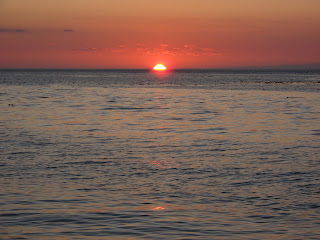
Within these spaces, you'll discover events and sights—some exceptional, others unnoticed, yet all fascinating—that occur outside our Earthly sphere.
Consider our skies tonight shortly after sunset.
High in the west shines brilliant Venus. Somewhat to its upper left lies the dimmer Saturn, but still brighter than any star in the area. As June continues, Venus creeps closer each night to the Ringed Planet until it finally passes Saturn on July 1.
Low in the east-southeast, glows Jupiter. The King of Planets is visible all night. By the beginning of morning twilight, Jupiter moves to the west-southwest.
Long before dawn, Mars sits unmistakeably high in the east. As the weeks pass, it grows brighter as our Earth slowly approaches it for the December close encounter.
Such is our view from Earth...